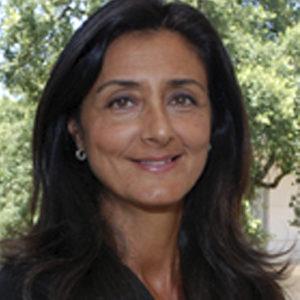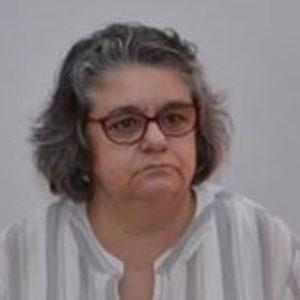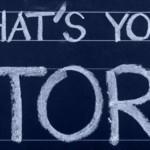
Ana Luisa de Oliveira Pires, Maria do Rosário Rodrigues & Ana Maria Pessoa
In this article we present some reflections of the ongoing research, developed within the scope of the EEP project — Empowering ePortfolio Process. We discuss some central ideas that emerged from the study focused on the students’ experiences and perspectives of ePortfolios, developed at the School of Education of the Polytechnic Institute of Setubal. We discuss its preliminary results broadening the focus to its implications to Higher Education pedagogy and to the development of students’ transformative capabilities — autonomy, reflexivity, critical thought, creativity and cooperation, amongst others. We highlight the ePortfolio contribution, as an epistemic framework, to the HE pedagogical transformation.
Introduction
In the last two decades, the sense and purpose of Higher Education (HE) have been questioned, specifically in the context of globalization, Bologna’s reforms, massification and expansion (Barnett 1994, Barnett 2013, Eggins 2003, Jongbloed & Vossenstein 2016, Ryan & Tilbury 2013, Sporn 2003, Taylor 2003, Vieira, Silva, & Almeida 2009). The complexity of the societal transformation has challenged HE institutions all over the world, leading to change and reforms, in order to meet a diversity of needs from students, employers, communities, and regions (Pires 2016). The reinvention of HE in the post-massification era is seen a way to “guarantee the public value of higher education in a new societal context” (Jongbloed & Vossenstein 2016, 252). Considering that HE is both a concept and a social institution, we agree with Barnett (2013), defending that it is possible to reflect on its possibilities and extend it towards its realization. In this sense, we stress the need to reinvent HE practices, expanding its possibilities in order to empowering students for challenges they will face in the near future. In this article, we discuss the potential contributions that the use of ePorfolios can bring to HE practices, based on the preliminary results of the ongoing EEP research.
What pedagogy do we want in HE?
As known, the dynamics and the complexity of the changes in HE have a major impact on knowledge and on pedagogic practices, which, in turn, can affect in a recursive way the all system, systemically expanding the horizon of learning possibilities.
Discussions about pedagogy have never been as important as today. Bologna changes have put the focus on student-centered learning (on students experiences and interests) and on the outcomes of the learning process (development of competences and capabilities), rather than the teaching and curricular contents. As pointed out, the complexity of the societal transformations demands the construction of new meanings for HE and in this context research have highlighted that to transform pedagogy in HE is an inevitable need (Vieira, Silva & Almeida 2009). These authors have discussed educational practices in HE, pointing out to the need to transform pedagogy in order to promote transformative learning. To fulfill this purpose, they point out a set of transdisciplinary principles that can be taken into account in order to create transformative pedagogic practices in HE: intentionality, transparence, coherence, relevancy, reflexivity, democraticity, self-regulation and creativity/innovation.
Stating that the pedagogic dimensions are not always present in the globalized discourse on the learning arena, Ryan & Tilbury (2013) also argue the need for renewal of student and teachers approaches, specifically highlighting its potential for democratic and emancipatory purposes. In this sense, they articulate pedagogic innovation with flexibility in HE, exploring the possibilities given by Information and Communication Technologies, crossing boundaries within a systemic and integrative perspective.
What competences and capacities do we want to promote in HE?
The discussion about what kind of competences and capacities should HE develop has gone on several decades and can be seen as a never-ending story. We find in literature competing perspectives and even opposite assumptions about competences, leading to different educational rationales (Barnett 1994, Pires 2005). These different conceptions are frequently the translation of the values and purposes attributed to education. As Biesta (2010) states, there are three main dimensions in education — qualification, socialization and subjectification — that have been functioning as rationales for education. Perhaps the most interesting thing is to understand their intersections and synergies, in order to look for its potentialities (ibid.).
If we accept the idea that education is a space of (inter)personal emancipation and social transformation (Vieira 2011), we understand that HE has a crucial role in the construction of the subject, sharing Barnett’s (1994, 193) perspective of “higher education for life” where the role of the educator is leading students to a learning community, interacting and participating, being mutually supportive and self-critical. The understanding of Higher Education as a self-construction is one of its main ideas: “this is a construction of the self through critical dialogue and mutual reflection, a process requiring toughness on the part of the student, so as to produce a self, separate from external frameworks (of thought or action, of work or intellect).” (Barnett 1994, 192). As argued by the author, the framing of the curriculum and the pedagogical relationship act like an epistemic framework. They reflect what is valued by educators as acts of knowing. As stated, “the medium is the message” (Barnett 1994, 56).
Biesta (2010) has argued that education should always contribute to processes of subjectification — the process of becoming a subject 1 — allowing students to become more autonomous and independent, both in thinking and acting.
Following Larrosa’s (1994, 42) ideas, pedagogic practices are “places of mediation in which the person simply finds the resources for the full development of his self-consciousness and self-determination, or for the restoration of a relationship with himself.” The terms of autonomy and self-regulation translate a form of relationship that is that of the subject with himself, a reflexive way of analyzing his own experience. In this sense, critical reflection is intrinsically articulated with autonomy.
For other authors, autonomy can be defined as the “competence to develop as a self-determined, socially responsible and critically aware participant in (and in addition to) educational settings (…)” (Jiménez Raya et al. 2007, cited by Vieira 2011, 12). Decision-making (making choices) and acting in social settings (with others) are also crucial dimensions for analyzing this concept.
In the light of Paulo Freire’s (1996) critical pedagogy, autonomy is one of the main purposes for education. It involves freedom, decision and responsibility: autonomy is a process of maturing of the being for itself, is to become. In this sense, the pedagogy of autonomy is centered on experiences that promote decision and responsibility, experiences that respect freedom (Freire 1996). Following the previous assumptions, a broader and holistic perspective on autonomy should take into account the different dimensions that are involved in the process of becoming autonomous: personal, social and political, in order to understand the complexity of the processes involved.
As highlighted by Freire (1996), education is a dialogical process, which allows students to reflect upon reality, to discuss, to share and to construct a mutual understanding, adjusting collectively in a democratic framework. The practice of critical dialogue and mutual reflection is deeply articulated with cooperation and collaboration, which are capabilities developed by dialogical processes.
New teaching and learning dynamics: digital portfolios as strategies of making sense and becoming
The use of portfolios in education — and in HE in particular — has been increasingly recognized as a methodology that can promote new learning and teaching dynamics, anchored on an autonomous and reflexive activity (Gomes & Alves 2010, Morgado, Pinto, Montes, & Vieira 2009, Sá-Chaves 2005, Veiga Simão 2005). The reasons underlying this growth and consolidation have to do with its coherence with the critical-reflexive and ecological education paradigm, contrasting with the declining of the technical and instrumental one (Sá-Chaves 2005). According to Sá-Chaves (2005), a portfolio promotes processes of hetero and auto-identification, reinforcing the sense of authorship and responsibility. It can be understood as a dialogue between the student and himself, as a way of organizing thinking and learning, enhancing engagement and producing sense, within the framework of the self-regulated learning. But it can be also a collaborative process — developed through peer work and group discussions —, that promotes the sharing of learning in a specific community, depending on the design of the strategy.
Following this assumption, Gonçalves and Ramalho (2009) have also shown the contributions of the reflexive digital portfolios in HE as processes of construction of knowledge, transformation of practices and contexts, professional emancipation and pedagogical innovation. In this framework, a digital portfolio strategy is understood as a collaborative act that demands interaction and support, valuing the peer work in the knowledge construction process; it integrates reflexive, critical and conscious action on past and future experience. According to (Morgado, Pinto, Montes, & Vieira 2009), the pedagogic principles of a learning portfolio can be identified as reflexivity, democraticity, creativity and innovation, which can promote the development of a more conscious and active being.
Making a bridge between theory and practice: the Empowering ePortfolio Project
The EEP project – Empowering ePortfolio Process — is an Erasmus+ project that aims to promote student-centered education, improving students’ engagement in learning and assessment in Higher Education, developing their digital competence and facilitating the construction of their identity, more specifically in the learning and professional domain. The project is focused on “empowering the students to be more autonomous, to participate in assessment processes and to improve the students’ creativity by developing innovative ways to make their competences transparent in digital environments” (Kunnari & Laurikainen 2017, 10).
Within the EEP project framework, digital portfolios are named ePortfolios, and are defined as “student-owned digital working and learning spaces for collecting, creating, sharing, collaborating, reflecting learning and competences, as well as storing assessment and evaluation. They are platforms for students to follow and be engaged for their personal career development, and actively interact with learning communities and different stakeholders of the learning process” (Kunnari & Laurikainen 2017, 7).
The project EEP highlights some of the ideas and assumptions from the previous theoretical discussion: ePortfolios can be transformative practices in HE, providing the epistemic framework, acting as mediation spaces for students promoting self-consciousness and self-determination, developing competences and attitudes for life.
In this context, and at the first stage of the project, the Portuguese research team has developed a study aiming to identify students’ perspectives on the use of ePortfolios in HE, based on their previous learning experiences and involvement in educational strategies supported on digital tools — developed in the College of Education of the Polytechnic Institute of Setúbal.
General methodology of the study
The nature of the research is qualitative (Amado, Crusoé, & Vaz-Rebelo 2014, Azevedo et al. 2010, Bogdan & Biklen 1994), emphasizing the comprehension of the educational phenomenon in its complexity, valuing the subjective and reflexive dimension of its stakeholders. Two types of information collection procedures were used, suiting the nature of the information to be collected and taking into account the resources and time constraints: the group interviews (Amado & Ferreira 2014) and the narratives written by students, close to an open questionnaire or a composition (Amado 2014). For the group interviews, three groups of students were created (total of thirteen) with the following criteria: having been in contact with learning / evaluation strategies using digital media in the previous school year; are enrolled in different courses at ESE-IPS, guaranteeing diversity of profiles both in terms of degrees and master degrees. Narratives were written by three Master’s students following a list of topics and were analyzed by a qualitative content analysis procedure2. The narratives of the students were focused on the experience of building a blog, which they had had in the previous undergraduate studies.
Analysis and discussion: ePortfolio as a mediation space for learning and self-creation
Here we discuss some of the emerging ideas that have arisen from the interviews and narratives analysis, focusing on the value of ePortfolios as a mediation space for students’ learning process and development that can act as an epistemic framework (Barnett 1994).
Related to the personal dimension of the process and focusing on the students’ engagement in the ePortfolio activities, we have identified that their implication is articulated to multiple aspects and that has different nature: some of these aspects are intrinsic but others are articulated with external factors, in particular with the benefits perceived by the students. Regarding the intrinsic reasons, we highlight the meaningfulness of the ePortfolio process: it was felt meaningful and recognized with a “true value” in itself. The process is engaging in itself, “considering that we are constructing our own materials with a very own and personal sense” (Narrative 2). Students’ personal interest and curiosity were also identified as bases of the motivational dynamics: “our commitment in the construction of the blog was supported by our increasing interest and curiosity.” (Narrative 1).
The perception that an ePortfolio is a creative process — “(to work) in a more creative way …” (2D) — was identified as a competence developed and needed at the same time — is also a reason that engages students in it. As evidenced by the student: “It is the whole process of creation, exploring, reflecting on themes about which we are not aware; I think this is also positive, it involves great effort on our part to present something of personal value and (…) for society itself. I think it is important; … some media to think about strategies and better ways to really show our work …” (2E)
The recognition of authorship comes articulated with the creative dimension, explicitly highlighted by a student as an important factor for her engagement in the construction of the ePortfolio: “… in fact we can leave our personal mark, ends up motivating us a little …” (2E). Or, according to another student: “Yes, we can put our personal share; when we did it in photo story it was very much our staff, creativity, our involvement … our ideas, and we could explore … I think it is very important to have these tools … that make working in a more playful way” (2C). The ePortfolio offers the possibility to students to create their own materials in a more creative way by using non-traditional resources: “Yes we do have other forms of make our productions through other programs, other resources, not that traditional … word … “(2C).
Some students valued the ePortfolio process of exploration and discovering new knowledge with the support of teachers, highlighting learning by discovery. Other students value the ePortfolio practice in its research component, related to explorations, deepening of knowledge and new findings. It was also referred that the interest in the subject/topic of work and knowing that it will be shared with others act as relevant engaging factors.
Related to the dialogical dimension, students have highlighted the importance of the peer work and the collaborative activities in the learning process, in all the phases of the construction of the ePortfolio, from the scratch to the final product. Collaboration, comprehensive discussions, learning from others’ experiences and sharing were considered crucial dimensions in the process: “If it’s in a group, the opinions may be completely different, but listening can always improve, it can evolve.” (3B), and also: “Cooperation with each other. I think this is fundamental” (2E).
The mutual support developed through a partnership relationship is the context to overcome their difficulties:
“The observation of the blogs our colleagues had done as well as the sharing of information and knowledge were also a very important milestone. This regular way of working allowed us, from week to week, to enrich our blogs. This way of working showed us the difficulties everyone had to overcome. It developed constant mutual support and partnership attitudes because the students who had less difficulty helped the others to solve their problems. To work in peer groups during the construction of the blog was also very important for the success of the project. As we had already worked together in other CU some of us had a certain complicity that was very important, particularly when we had to discuss different ideas.” (Narrative 1)
Other engaging factors linked to the external and material conditions are related to the possibility to perform and to access to the work anywhere and anytime, to make it evolve and improve it continuously over time. The main benefits of the use of ePortfolios are perceived as: the sharing of knowledge and information with colleagues, professionals from the same area (and with the children’s families, by students who are enrolled in education courses); they have also have referred the possibility of sharing in broader contexts, like at the organizational/regional/national / international level. The usefulness of an ePortfolio in the professional future was also highlighted by several students, particularly those enrolled in education degrees.
In addition, challenges were also encountered: the dynamics of the portfolio process has challenged students to go further, to explore new paths and to overcome difficulties. Students identify some of the challenges, such as the willingness to explore the unknown, the openness to change, which require the courage to step out of their comfort zone: “Be available to get out of comfort zone which is a bit complicated, sometimes …” (2D); “It involves effort and involves courage as well …” (2E). We can find other illustrative examples: “To explore something unknown…” (2B); “Yes, … to be available to explore this type of resource … If you are interested in learning, be aware of the potential of this resource; … it demands work to explore and perceive the potentiality of the resource and have an interest in wanting to learn.” (2F).
Regarding to the competences and skills needed and developed in the construction of the ePortfolios, students refer mainly to two types of competences: the digital competences — referred as “technological skills” (3C), related to “working with programs that we do not work on the day to day …” (3A) — and the transversal competences and capabilities linked to search, organization and systematization of the information: “There is systematization. A person has to create a portfolio tree. We should have disciplines that would teach us the structure” (1C).
Related to organization and systematization, students refer that:
We have to organize either alphabetically or chronologically, we have to be able to organize, both mentally and in the portfolio, so that we can find what we want. And systematization is to avoid confusion of ideas. I have to be able to grasp what is essential, which often does not happen, because maybe we are formatted to dump everything. I know I’m formatted to know how to decorate and dump, which often does not happen, because maybe we’re formatted to dump everything. (1B)
And also: “It is important to have some level of organization; It is not just to send things like this.” (2F)
As evidenced by Alexiou and Paraskeva (2010) the exploration of digital portfolios in HE can support self-regulated students and empowering them as active participants of their learning, allowing them to develop critical thinking and to become more active and autonomous.
Following this notion, we identified in the students’ discourse the importance of the critical and reflexive dimension, which can be illustrated by the following sentences: “By putting in the portfolio we are again in contact with the activity and we are reflecting once again” (2A), and “Developing other skills such as deepening logical thinking … (gives a concrete example) in this last curricular unit (…) we had to have logical thinking, a deeper thought to achieve, this was a competence that we acquired. (…) deepening of the logical thinking …” (2B): “The reflection is also important (…). To think for ourselves and expose our personal opinion about what we are writing, otherwise ends up just to be not just copy / paste copy / paste but in other words, that is not the goal.” (2E), “And I think that’s it, we have to have a more reflective capacity to be able to organize our portfolio better.” (B1): “(the process) gives more reflection to the topics and a more thoughtful consideration of what is relevant to our objective or not” (Narrative 2).
As stated by a student, the construction of the ePortfolio was a process of self-consciousness, development and personal construction: “In making this portfolio, I perceive all the work that was done and as I grew as a person, as a student, within that curricular unit, over time. I see the process and all my evolution.” (1.B), reinforcing Larrosa’s (1994, 7) idea that pedagogic practices are institutionalized spaces where the nature of the person — self-conscious and self-owned — can develop, as mechanisms of self-production.
Final remarks
In this article we discussed the possibility of ePortfolios, as pedagogic practices, can be explored for enhancing students’ self-consciousness and self-determination (Larrosa 1994).
As evidenced before, students’ ePortfolio experiences have contributed to their learning and development processes, from a multiple and integrative perspective — students have considered that they have developed digital competences/technological skills and a wide range of transversal and transformative capabilities linked to the process, such as creativity, autonomy, reflection and logical thinking, capability to select and organize information, systematization, collaboration and sharing, between others. They also refer to have gained a broader and meaningful knowledge of different contents and subjects, related to the explored themes, in a dialogical and self-regulated way.
As defended by Ryan and Tilbury (2013), promoting students’ transformative capabilities and developing a culture of social learning can create new pathways for learner empowerment, which can be attained through the exploration of ePortfolio processes. As presented, these learning experiences have allowed students to develop relevant competences for life, exploring possibilities that emerge from the intersection between the domains of qualification, socialization and subjectification.
In the end, did we give some contributes from the EEP project to the discussion on pedagogy in HE? In a way, perhaps yes, but we are far from its end. We still need to deepen the ongoing discussion, namely through the exploration of new pedagogical practices “that will best serve HE in promoting learning across societies and equipping graduates for life beyond university.” (Ryan & Tilbury 2013, 7).
1 According to Biesta (2010, 17), subjectification is one of the three functions of education that can be understood as the opposite of the socialization: “it is precisely not about the insertion of ’newcomers’ into existing orders, but about ways of being that hint at independence from such orders, ways of being in which the individual is not simply a ’specimen’ of a more encompassing order”.
2 The students’ voices in the interviews are identified by a number and a digit. Excerpts of the narratives are identified (Narrative 1 and 2).

This article was produced in the Erasmus+ (KA2 action) funded project “Empowering Eportfolio Process (EEP)”. The beneficiary in the project is Häme University of Applied Sciences (FI) and the partners are VIA University College (DK), Katholieke Universiteit KU Leuven (BE), University College Leuven-Limburg (BE), Polytechnic Institute of Setúbal (PT) and Marino Institute of Education (IE). The project was implementated during 1.9.2016–30.11.2018.
Authors

Ana Luisa de Oliveira Pires has a Ph.D. in Education. She is a teacher at the Department of Social Sciences and Pedagogy at School of Education, and researcher at UIED, New University of Lisbon. Her main area of research is Adult Learning, Lifelong learning policies, Recognition of Prior Experiential Learning, Higher Education, and Teacher Training and Development.

Maria do Rosário Rodrigues has a Ph.D. in Multimedia in Education. She is a teacher at the Sciences and Technologies Department of the School of Education. Her professional activity focuses on the integration of ICT in the curriculum, initial and teachers’ professional development and the design, development and evaluation of digital learning resources.

Ana Maria Pessoa has a Ph.D. in History of Education/Compared Education. She is a teacher at the Department of Communication Sciences and Language, in the School of Education. Her main interest in EEP is to deepen knowledge and skills in the use of ePortfolio as a learning tool and in students’ assessment and motivation.
Bibliography
Alexiou, A., & Paraskeva, F. (2010). Enhancing self-regulated learning skills through the implementation of an e-portfolio tool. Procedia – Social and Behavioral Sciences 2, 3048–3054.
Amado, J. (2014). A investigação em Educação e seus paradigmas. In J. Amado (ed.) Manual de Investigação Qualitativa em Educação. Coimbra: Imprensa da Universidade de Coimbra, 19–70.
Amado, J., & Ferreira, S. (2014). A entrevista na Investigação em Educação. In J. Amado (ed.) Manual de Investigação Qualitativa em Educação. Coimbra: Imprensa da Universidade de Coimbra, 207–290.
Amado, J., Crusoé, N., & Vaz-Rebelo, P. (2014). Quadros Analíticos da Investigação Qualitativa em Educação. In J. Amado (ed.) Manual de Investigação Qualitativa em Educação. Coimbra: Imprensa da Universidade de Coimbra, 73–104.
Azevedo, N., Alves, M., Gonçalves, Nascimento, A., Couceiro, M., Neves, C., Gomes, E., Vieira, R., Rosa, J., & Guerrero, A. (2010). Investigar em educação: desafios da construção de conhecimento e da formação de investigadores num campo multi-referenciado. Caparica: UIED – Coleção Educação e Desenvolvimento.
Barnett, R. (1994). The limits of competence. Knowledge, Higher Education and Society. Buckingam: Ed SRHE & Open University Press.
Barnett, R. (2013). Imagining the University. Abingdon: Routledge.
Biesta, G. (2010). What is education for? In G. Biesta (ed.) Good education in an age of measurement: ethics, politics and democracy. Boulder: Paradigm Publishers, 10–27.
Bogdan, R., & Biklen, S. (1994). Investigação qualitativa em Educação: uma introdução à teoria e aos métodos. Porto: Porto Editora.
Eggins, H. (2003). Globalization and reform: necessary conjunctions in higher education. In H. Eggins (ed.) Globalization and reform in Higher Education. Buckingham: SRHE and Open University Press, 1–8.
Freire, P. (1996). Pedagogia da Autonomia. Saberes necessários à prática educativa. Rio de Janeiro: Editora Paz e Terra.
Gomes, M. J., & Alves, A. P. (2010). O potencial educativo dos e-portfolios. Revista e-Curriculum 5, 1–12.
Gonçalves, D., & Ramalho, R. (2009). O (e)Portfolio Reflexivo como estratégia de Formação. Actas das Jornadas E-Portfolio – Jornadas Internacionales Docencia, investigación e innovación en la Universidad: Trabajar con (e) portfolio en la Universidad. Santiago de Compostela: Universidad – Santiago de Compostela, 1–15.
Jongbloed, B., & Vossenstein, H. (2016). In conclusion: doing more with less. New ways of providing and financing Higer Education in the Post-massification era. In B. Jongbloed, & H. Vossenstein (eds.) Access and Expansion Post Massification. Opportunities and barriers to further growth in Higher Education Participation. . New York: Routledge, 238–253.
Kunnari, I., & Laurikainen, M. (2017). Collection of Engaging Practices in ePortfolio Process – Publication of the Empowering Eportfolio Process project. Retrieved 4 January from https://goo.gl/ByVHBX
Larrosa, J. (1994). Tecnologias do eu e educacão. In T. T. Silva (ed.) O sujeito da educação. Petrópolis: Vozes, 35–86.
Morgado, J., Pinto, A., Montes, C., & Vieira, P. (2009). Portefolio: à procura… de um caminho…como tantos outros. In F. Vieira (ed.) Transformar a Pedagogia na Universidade. Narrativas da prática. Santo Tirso: De Facto, 10–30.
Pires, A. (2005). Educação e Formação ao Longo da Vida: análise critica dos sistemas e dispositivos de reconhecimento e validação de aprendizagens e de competências. Lisboa: Fundação Calouste Gulbenkian.
Pires, A. (2016). Between Challenges and Trends of Lifelong learning: Higher Education and the Recognition of Prior Experiential Learning. In B. Jongbloed, & H. Vossenstein. Access and Expansion Post Massification. Opportunities and barriers to further growth in Higher Education Participation. London: Routledge, 212–237.
Ryan, A., & Tilbury, D. (2013). Flexible Pedagogies: new pedagogical ideas. York: The Higher Education Academy.
Sá-Chaves, I. (2005). Notas de apresentação. In I. Sá-Chaves. Os “portfolios” reflexivos (também) trazem gente dentro. Reflexões em torno do seu uso na humanização dos processos educativos. Porto: Porto Editora, 7–19.
Sporn, B. (2003). Trends relating to higher education reform in Europe: an overview. In H. Eggins (ed.) Globalization and reform in Higher Education. Buckingham: SRHE and Open University Press, 117–130.
Taylor, W. (2003). Steering change in tertiary education. In H. Eggins (ed.) Globalization and reform in Higher Education. Buckingham: SRHE and Open University Press, 11–31.
Veiga Simão, M. (2005). O portfolio como instrumento na auto-regulação da aprendizagem: uma experiência no ensino superior pós-graduado. In I. Sá-Chaves (ed.) Os “portfolios” reflexivos (também) trazem gente dentro. Reflexões em torno do seu uso na humanização dos processos educativos. Porto: Porto Editora, 83–100.
Vieira, F. (2011). A experiência educativa como espaço de (trans)formação profissional. LINGVARVM Arena, 2, 9–25.
Vieira, F., Silva, J., & Almeida, J. (2009). Transformar a pedagogia na universidade: possibilidades e constrangimentos. In F. Vieira (ed.) Transformar a Pedagogia na Universidade – narrativas da prática. Santo Tirso: De Facto, 17–38.





